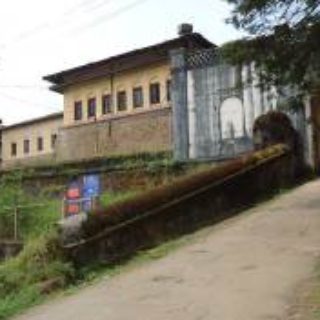
N.K. Ganapayya: The great patriot of Kodagu
When The Commissioner’s Wife Was Piqued
(By: C.P. Belliappa)
Circa 1922, William Penn Barton was the Chief Commissioner of Coorg. Those days the residence of the Chief Commissioner used be within the Mercara Fort premises and it was overlooking the main road where the Kodava Samaja building is now located. This edifice, built on the ramparts of the fort, can be seen even today.
William Penn Barton had recently brought his young wife after a visit to England. Mrs Barton was much impressed with the set-up which was palatial compared to her modest home back in England. The weather was excellent, and social life was quite good with the North Coorg Club being just a stone’s throw away. Besides, she now had several servants waiting hand-and-foot on her.
However, amidst this near idyllic lifestyle, there was a recurring nuisance that kept bothering Mrs Barton. A few months later it became unbearable for her; and for Mr Barton his domestic bliss was in jeopardy.
The cause for this crisis was the umpteen bullock carts that used to ply on the main road. The winding up-and-down roads in Mercara were especially hard on the animals pulling the carts. All the requirements for Mercara came very early in the mornings so that the household needs were made available to start the day. The cool early hours helped the bulls bear the heavy burden. The carts were normally loaded with groceries, vegetables and firewood.
Those of my vintage, and older, will recall that bullock carts had a device known as ‘bari’ used as a brake. This was a simple contraption with two logs of wood fixed across the steel rim of the large wooden wheels of the bullock cart. The two logs were tied to a rope which was tethered to the front of the cart, and lay below the driver. When the driver stepped on the ropes the logs pressed against the steel rim and slowed down the cart. The primary use of ‘bari’ was to prevent a fully laden bullock cart from moving uncontrollably down a sloping road. The steep decline after the North Coorg Club required the driver to stand on the ropes in order to help the animals gently move forward with the weight of the cart falling squarely on their necks. This manoeuvre produced loud grating noise as the logs pressed hard against the wheels.
Madam Barton could not take this annoying grating noise early in the morning disturbing her sleep. Her complaints became so vehement that Mr Baton had no options but to ban bullock carts under the ‘Police Act’ from plying on the main road. This action put the entire population of Mercara into great inconvenience. Now their requirements had to be carried on foot by men.
No one had the courage to question the Chief Commissioner. But an eighth-standard student – N.K. Ganapayya – at the Government Central School was infuriated, and he took a bold decision. Ganapayya wrote a letter to the editor of ‘Sri Kanteerava’, which was published from Mangalore, about the arbitrary actions of the Chief Commissioner because of which an entire town was suffering. ‘Sri Kanteerava’ published the letter and created a real flutter. Ganapayya became an instant hero at his school. My father C.M. Poonacha, two years junior to Ganapayya in the same school, was full of admiration at the courage of his senior. It was the first stirrings of nationalistic feeling in my father. But everyone now wondered what terrible actions would be taken on Ganapayya.
As feared the editor of ‘Sri Kanteerava’ and young Ganapayya were apprehended by police and produced at the Court at Mercara Fort. My father and his friends bunked school to be outside the Court room to see what would happen to their friend. The Magistrate levied a fine of Rs. 50 on the editor. Since Ganapayya was a juvenile his punishment was to remain standing in the Courtroom till the Court adjourned! He was let-off with a stern warning.
After this incident, my father and Ganapayya became life-long friends. Ganapayya was a maverick and an ardent champion of freedom and free-enterprise. He was against Nehruvian model of command-economy for the country. He joined hands with C. Rajagopalachari and was a leading light in the Swatantra Party. When Indira Gandhi declared Emergency he was incensed. He shot-off a series of letters to Indira Gandhi criticizing her actions. As expected the police arrested the then seventy-year old Ganapayya. He spent two years in jail.
When Ganapayya was in his fifties he took on a great challenge and invested in a coffee estate in Saklespur in Hassan district. With his spirit of entrepreneurship, his holding swelled to more than thousand acres. But Ganapayya led a Spartan life and focused on community development.

